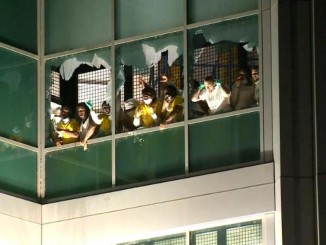
On Sunday, September 24th, the top officers of The Writers Guild of America (WGA), announced a tentative agreement (TA) on a new contract for its 11,500 members who work for Hollywood film and TV studios, like MGM and Disney. WGA members went on strike on April 18th, almost six months ago. The 115,000-member Screen Actors Guild (SAG) struck the studios on July 14th and no agreement in their strike has been reached.
After announcing the tentative agreement, WGA leaders directed their members to stop picketing. Now that the WGA officials have voted to recommend ratification, the union says members can return to work even though the membership won’t finish voting on the tentative agreement until Oct 9th and the SAG strike continues. Nevertheless, some WGA members say they will continue to honor the Screen Actors picket lines at the studios where they work.
Now that these TV and movie writers have a tentative agreement to end their long strike, what were the results?
The yearly wage increases in the WGA three-year TA are 6%-5%-5%. The union officials did not succeed in getting any enforceable contract language to keep the studios from using Artificial Intelligence (AI) to replace human writers. It did succeed in raising the pay writers get for shows that are released to Netflix and other streaming channels. WGA officials call this agreement “extraordinary,” but some workers might say the agreement is “extraordinarily inadequate.” The studio’s use of AI will accelerate under this contract and the job security provisions in the contract will only protect a small portion of the members at best. The pay increases are far less than what is needed to keep up with inflation.
Actors also face job losses thanks to advances in digital technology. High-powered computers give the studios the ability to create life-like images of characters, sometimes using recordings of live actors from movies and shows produced in the past. If the terms of the WGA agreement turn out to be a model for any SAG agreement, then actors will face even higher rates of unemployment than the rates the already unemployment-plagued industry has experienced for years.
Strikes in the film industry are rare and strikes by both writers and actors are rarer still. When they do take place, they tend to take a long time to settle. Workers in many industries face the same pressures from automation as the SAG and WGA members. We shouldn’t have to fight automation’s threat to our jobs one union or one group of workers at a time. When we do, the bosses have the upper hand, and the paltry gains the writers made in spite of their long strike demonstrate this. Imagine how different the outcomes would be for workers both unionized and non-union if we all went out on strike together, at the same time, against the threat of job-killing automation.




